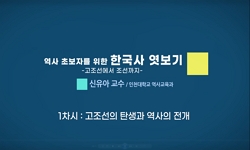고려시대 평기와는 문양은 다양한 반면, 형태나 제작 속성에는 큰 차이가 없어서 편년에 어려움이 있다. 이에 본고에서는 17종류의 고려시대 연호명 평기와의 제작기법 변화를 통해 이 시대 ...
http://chineseinput.net/에서 pinyin(병음)방식으로 중국어를 변환할 수 있습니다.
변환된 중국어를 복사하여 사용하시면 됩니다.
- 中文 을 입력하시려면 zhongwen을 입력하시고 space를누르시면됩니다.
- 北京 을 입력하시려면 beijing을 입력하시고 space를 누르시면 됩니다.

고려시대 평기와 제작기법의 변천 = The Changes in Manufacturing Techniques of the Roofing Tiles the Goryeo Period
한글로보기https://www.riss.kr/link?id=A60242038
- 저자
- 발행기관
- 학술지명
- 권호사항
-
발행연도
2007
-
작성언어
-
- 주제어
-
KDC
900
-
등재정보
KCI등재
-
자료형태
학술저널
-
수록면
33-52(20쪽)
- 제공처
-
0
상세조회 -
0
다운로드
부가정보
국문 초록 (Abstract)
그 결과, 고려시대 평기와에서 편년적으로 의미있는 속성은 수키와의 평면형태와 암키와 내면의 윤철흔의 유무이다. 즉 수키와는 평면형태가 제형의 토수기와에서 장방형의 미구기와로, 암키와는 윤철흔이 없다가 새로이 출현하는 변화를 보인다.
고려시대 평가와 제작기법의 변천 과정은 모두 3단계로 구분된다. 1단계 (965~1027년)는 토수기와와 내면에 윤철흔이 없는 암키와, Ⅱ단계(1028~1112년)는 미구기와와 내면에 윤철흔이 없는 암키와, Ⅲ단계(1113년 이후)는 미구기와와 내면에 윤철흔이 있는 암키와가 조합된다. 이 두 가지 속성은 Ⅲ단계부터 정형화되어 더 이상의 변화가 관찰되지 않는다. 따라서 이 시기 이후 평가와를 편년하기 위해서는 문양이나 윤철흔의 형태뿐만 아니라 연호명막새, 가마 출토 기와를 통한 연구도 함께 이루어져야 할 것이다.
고려시대 평기와는 문양은 다양한 반면, 형태나 제작 속성에는 큰 차이가 없어서 편년에 어려움이 있다. 이에 본고에서는 17종류의 고려시대 연호명 평기와의 제작기법 변화를 통해 이 시대 평기와의 편년을 시도해 보았다.
그 결과, 고려시대 평기와에서 편년적으로 의미있는 속성은 수키와의 평면형태와 암키와 내면의 윤철흔의 유무이다. 즉 수키와는 평면형태가 제형의 토수기와에서 장방형의 미구기와로, 암키와는 윤철흔이 없다가 새로이 출현하는 변화를 보인다.
고려시대 평가와 제작기법의 변천 과정은 모두 3단계로 구분된다. 1단계 (965~1027년)는 토수기와와 내면에 윤철흔이 없는 암키와, Ⅱ단계(1028~1112년)는 미구기와와 내면에 윤철흔이 없는 암키와, Ⅲ단계(1113년 이후)는 미구기와와 내면에 윤철흔이 있는 암키와가 조합된다. 이 두 가지 속성은 Ⅲ단계부터 정형화되어 더 이상의 변화가 관찰되지 않는다. 따라서 이 시기 이후 평가와를 편년하기 위해서는 문양이나 윤철흔의 형태뿐만 아니라 연호명막새, 가마 출토 기와를 통한 연구도 함께 이루어져야 할 것이다.
다국어 초록 (Multilingual Abstract)
Attributes which have chronological significance include form of plan in convex roofing tile and existence of horizontal hollow(輪綴痕) in concave roofing tile. That is to say, the form of convex rooting tiles is transformed from ladder form to rectangle form. And concave roofing tile took horizontal hollow newly which had never been before.
The transition process in manufacturing techniques of roofing tile of Goryeo period could be divided into 3phases. Ⅰ phase(A.D.965~A.D.1027): combination of ladder form convex tile and concave tile which has no horizontal hollow. Ⅱ phase(A.D. 1028~A.D.1112): combination of rectangle form convex tile and concave tile which has no horizontal hollow. Ⅲ phase(A.D.1113-): combination of rectangle form convex tile and concave tile which has horizontal hollow. These two attributes had been standardised after Ⅲphase and had no variation after that phase. So, tiles at the edge of eaves that have chronological inscription and roofing tiles excavated from kilns as well as the patterns and existence of horizontal hollow should be examined together to date roofing tiles after that period.
There is difficulty with dating roofing tiles of the Goryeo period because the patterns are various, while no great difference with attributes concerned with form and manufacturing techniques, So, this study intended to establish a chronology on roofi...
There is difficulty with dating roofing tiles of the Goryeo period because the patterns are various, while no great difference with attributes concerned with form and manufacturing techniques, So, this study intended to establish a chronology on roofing tiles in question through examining variation of manufacturing techniques of 17 Goryeo roofing tile which have chronological era inscription.
Attributes which have chronological significance include form of plan in convex roofing tile and existence of horizontal hollow(輪綴痕) in concave roofing tile. That is to say, the form of convex rooting tiles is transformed from ladder form to rectangle form. And concave roofing tile took horizontal hollow newly which had never been before.
The transition process in manufacturing techniques of roofing tile of Goryeo period could be divided into 3phases. Ⅰ phase(A.D.965~A.D.1027): combination of ladder form convex tile and concave tile which has no horizontal hollow. Ⅱ phase(A.D. 1028~A.D.1112): combination of rectangle form convex tile and concave tile which has no horizontal hollow. Ⅲ phase(A.D.1113-): combination of rectangle form convex tile and concave tile which has horizontal hollow. These two attributes had been standardised after Ⅲphase and had no variation after that phase. So, tiles at the edge of eaves that have chronological inscription and roofing tiles excavated from kilns as well as the patterns and existence of horizontal hollow should be examined together to date roofing tiles after that period.
목차 (Table of Contents)
- 요약
- Ⅰ. 머리말
- Ⅱ. 연구사 및 연구의 방법
- Ⅲ. 고려시대 연호명 평기와의 검토
- Ⅳ. 고려시대 평기와 제작 기법의 변천
- 요약
- Ⅰ. 머리말
- Ⅱ. 연구사 및 연구의 방법
- Ⅲ. 고려시대 연호명 평기와의 검토
- Ⅳ. 고려시대 평기와 제작 기법의 변천
- Ⅴ. 맺음말
- 參考文獻
동일학술지(권/호) 다른 논문
-
- 중부고고학회
- 홍영의(Hong Young-eui)
- 2007
- KCI등재
-
- 중부고고학회
- 李羲仁
- 2007
- KCI등재
-
- 중부고고학회
- 김연수
- 2007
- KCI등재
-
- 중부고고학회
- 안병우(Ann Byung woo)
- 2007
- KCI등재




 스콜라
스콜라






